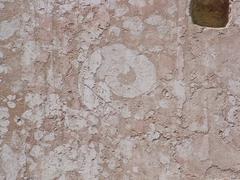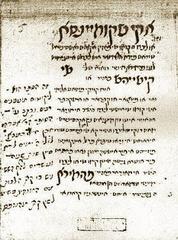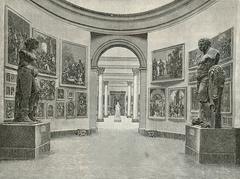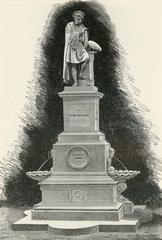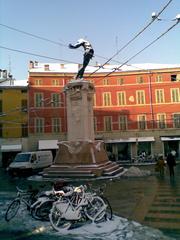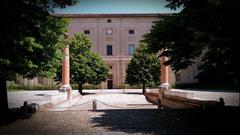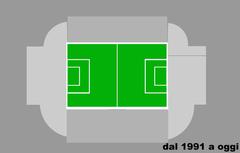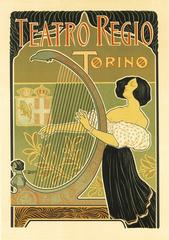
Palazzo del Giardino Parma: Visiting Hours, Tickets, and Historical Sites Guide
Date: 04/07/2025
Introduction
Nestled within the lush Parco Ducale, the Palazzo del Giardino (also known as the Palazzo Ducale) stands as one of Parma’s most iconic Renaissance and neoclassical landmarks. Commissioned in 1561 by Duke Ottavio Farnese, the palace embodies the grandeur of the Farnese dynasty, blending striking architecture with centuries of artistic patronage. Though the palace now serves as the headquarters of official institutions, its stately exterior and the surrounding Parco Ducale remain accessible, providing visitors with a unique window into Parma’s vibrant history and culture. This comprehensive guide details visiting hours, ticketing, accessibility, and nearby attractions, alongside essential historical and architectural insights.
For up-to-date information and special event announcements, consult official tourism sources (parma.info, visititaly.eu, 24hourstrotter.com).
Table of Contents
- Introduction
- Origins and Architectural Evolution
- The Farnese Era: Cultural Flourishing
- Bourbon Transition and Modern Use
- Artistic Heritage: Interior Highlights
- The Parco Ducale: Gardens and Leisure
- Visiting Information: Hours, Tickets, Accessibility
- Travel Tips and Nearby Attractions
- Frequently Asked Questions (FAQ)
- Summary and Final Tips
- References
Origins and Architectural Evolution
Commissioned in 1561 by Ottavio Farnese, the Palazzo del Giardino was envisioned as a residence befitting the grandeur of the Farnese court (Wikipedia). Jacopo Barozzi da Vignola, a master of Renaissance harmony and proportion, designed the initial phase (1561–1564), incorporating elements of a pre-existing Sforza-era castle. The palace’s plan drew inspiration from other Farnese properties, notably the Palazzo Farnese in Rome and Villa Farnese at Caprarola (Visit-Parma.com).
As courtly needs grew, the building underwent significant expansions in the late 16th and early 17th centuries by Simone Moschino and Girolamo Rainaldi, who added pronounced wings and foreparts. The result is an elongated, articulated structure that bridges Renaissance and early Baroque aesthetics.
A major 18th-century transformation led by Ennemond Alexandre Petitot introduced neoclassical flourishes: a mezzanine, raised foreparts, and the removal of grand staircases and fountains. The palace’s cream-hued façade, adorned with stucco, is now flanked by 18th-century statues by Jean-Baptiste Boudard, reinforcing its monumental presence within the Parco Ducale (Parma.info).
The Farnese Era: Cultural Flourishing
In the 17th century, the Palazzo del Giardino served as the epicenter of the Farnese court’s artistic and political life (visititaly.eu). The interiors were lavishly decorated with frescoes and art by masters such as Alessandro Tiarini, Agostino Carracci, and Girolamo Mirola. Mythological and allegorical themes dominated, reflecting the dynasty’s intellectual and cultural ambitions.
The palace hosted grand banquets, musical performances, and literary salons that drew artists and scholars from across Italy, cementing Parma’s status as a leading center of Renaissance and Baroque culture.
Bourbon Transition and Modern Use
As the Farnese dynasty waned in the 18th century, the palace’s role shifted. The Bourbon rulers repurposed it for administrative and military functions, and the ducal gardens were gradually opened for public enjoyment (visititaly.eu). Wartime damage during World War II led to significant restoration, including the reinstatement of the palace’s signature “Parma yellow” façade.
Today, the building houses the Carabinieri and RIS (Reparto Investigazioni Scientifiche). While interior access is largely restricted, the palace remains a symbol of Parma’s history and is periodically opened for special guided tours or cultural events (parma.info).
Artistic Heritage: Interior Highlights
Though public interior visits are rare, the palace’s documented treasures include:
- Sala del Bacio: Frescoed by Girolamo Mirola and Jacopo Zanguidi (Il Bertoja), featuring mythological scenes (Visit-Parma.com).
- Sala d’Orfeo: Decorated with Orpheus myth frescoes, blending classical narrative with courtly symbolism.
- Sala di Erminia: Painted by Alessandro Tiarini, this room pays homage to Torquato Tasso’s “Gerusalemme Liberata.”
- Sala dell’Amore: Conceived by Agostino Carracci and completed by Carlo Cignani, adorned with allegories of love and virtue.
- Sala di Circe: Features frescoes by Gian Battista Trotti (Il Malosso) depicting Circe’s legends.
- Sala degli Uccelli: Added in the 18th century, with a vaulted ceiling dotted with 204 stucco birds by Benigno Bossi—a Rococo masterpiece.
Many original artworks have been relocated to museums, but the palace retains significant decorative elements and heraldic motifs from the Farnese era (parma.info).
The Parco Ducale: Gardens and Leisure
Surrounding the palace, the Parco Ducale is a masterpiece of landscape architecture. Originating as a Renaissance garden, it was reimagined in the French style under Petitot (Wikipedia). The park boasts tree-lined avenues, monumental statues and vases by Jean-Baptiste Boudard, fountains, and a nymphaeum grotto.
Today, the park is Parma’s green heart—a favorite for walks, family outings, and cultural events. In autumn, golden foliage blankets the grounds, creating an enchanting atmosphere (Tasty Itinerary). The park’s accessible pathways, benches, and central café provide comfort for all visitors.
Visiting Information: Hours, Tickets, Accessibility
Opening Hours
- Parco Ducale: Open daily from dawn to dusk, year-round. Entrance is free.
- Palazzo del Giardino Interior: Generally closed to the public, but occasionally accessible during special events or guided tours. Check official Parma tourism sources for updates.
Tickets
- Parco Ducale and Palace Exterior: Free entry, no tickets required.
- Palace Interior: Tickets may be necessary for special openings or exhibitions; check official announcements in advance.
Accessibility
- Parco Ducale features wide, paved paths suitable for wheelchairs and strollers.
- Interior accessibility may be limited; contact event organizers or the palace administration regarding accommodations.
Travel Tips and Nearby Attractions
- Best Times to Visit: Spring and autumn offer the most beautiful park scenery. Late afternoon is ideal for aperitivo and people-watching.
- Cafés and Restrooms: The daMAT Chiosco in the park’s center serves drinks and snacks; public restrooms and benches are available.
- Getting There: Located at Parco Ducale, 43125 Parma PR, Italy—about a 10-minute walk from Piazza Duomo and 5 minutes from Palazzo della Pilotta (Tasty Itinerary).
- Nearby Sites: Palazzo della Pilotta (National Gallery, Farnese Theatre), Parma Cathedral, Teatro Regio, and Parma’s historic center.
- Cultural Events: Summer concerts and performances, particularly during the Parma Cittadella Musica festival (Italia.it).
Frequently Asked Questions (FAQ)
Q: Can I visit the palace interior?
A: Generally, no. The interior is closed except for special tours or events—check official websites for announcements.
Q: Do I need a ticket?
A: No ticket is needed for the park or palace exterior. Interior events may require tickets.
Q: Is the site accessible?
A: The park and palace exterior are accessible; interior access may be limited due to steps or restoration work.
Q: Are guided tours available?
A: Occasionally, during special events. Contact the tourism office for schedules.
Q: When is the best time to visit?
A: Spring and autumn, or late afternoon for local ambiance.
Summary and Final Tips
The Palazzo del Giardino, with its storied past and elegant setting within the Parco Ducale, is a cornerstone of Parma’s architectural and cultural identity. While interior visits are generally restricted, the palace’s façade, gardens, and vibrant local atmosphere offer a rewarding experience for all visitors. Enhance your visit by exploring nearby sites, enjoying local cuisine, and participating in cultural events.
For the latest information on guided tours, special events, and accessibility, consult official channels and consider using the Audiala app for audio guides and maps. Engage with Parma’s rich culture by following local tourism platforms and social media updates (parma.info, visititaly.eu, italia.it).
References
- Discovering the Palazzo del Giardino in Parma: Visiting Hours, Tickets, and Historical Insights, 2025, VisitItaly.eu (visititaly.eu)
- Comprehensive Guide to Palazzo Ducale del Giardino, 2025, Parma.info (parma.info)
- Palazzo Ducale di Parma: A Jewel to Rediscover, 2025, 24hourstrotter.com (24hourstrotter.com)
- Palazzo del Giardino History and Architecture, 2025, Visit-Parma.com (Visit-Parma.com)
- One Day in Parma - Travel and Food Guide, 2025, TastyItinerary.com (Tasty Itinerary)
- Emilia-Romagna Parma Guide History and Facts, 2025, Italia.it (Italia.it)
- Palazzo del Giardino Wikipedia, 2025 (Wikipedia)







